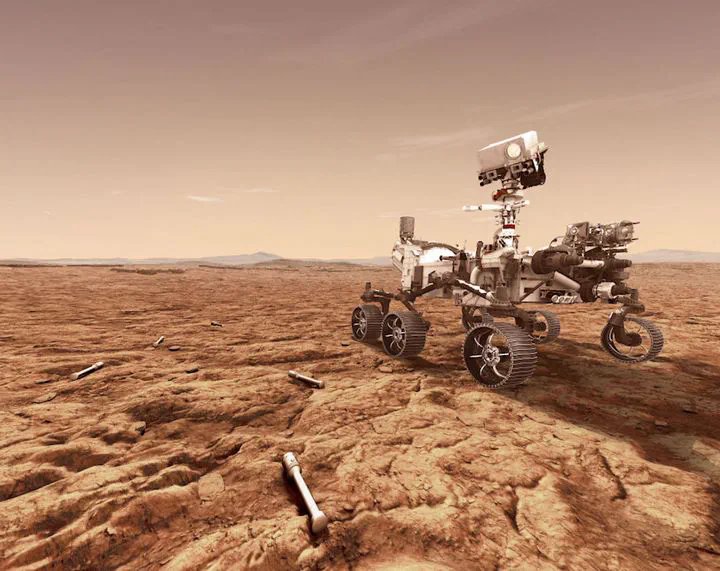Machine Vision Based Sample-Tube Localization for Mars Sample Return
Mar 1, 2021·,,,,,,,,,,·
0 min read
Shreyansh Daftry
Barry Ridge
William Seto
Tu-Hoa Pham
Peter Ilhardt
Gerard Maggiolino
Mark Van Der Merwe
Alex Brinkman
John Mayo
Eric Kulczyski
Renaud Detry
 NASA’s Mars Perseverance rover, which serves as the first stage of the MSR campaign, will store rock and soil samples in sealed tubes on the planet’s surface for future missions to retrieve, as seen in this illustration.
NASA’s Mars Perseverance rover, which serves as the first stage of the MSR campaign, will store rock and soil samples in sealed tubes on the planet’s surface for future missions to retrieve, as seen in this illustration.Abstract
A potential Mars Sample Return (MSR) architecture is being jointly studied by NASA and ESA. As currently envisioned, the MSR campaign consists of a series of 3 missions: sample cache, fetch and return to Earth. In this paper, we focus on the fetch part of the MSR, and more specifically the problem of autonomously detecting and localizing sample tubes deposited on the Martian surface. Towards this end, we study two machine-vision based approaches: First, a geometry-driven approach based on template matching that uses hard-coded filters and a 3D shape model of the tube; and second, a data-driven approach based on convolutional neural networks (CNNs) and learned features. Furthermore, we present a large benchmark dataset of sample-tube images, collected in representative outdoor environments and annotated with ground truth segmentation masks and locations. The dataset was acquired systematically across different terrain, illumination conditions and dust-coverage; and benchmarking was performed to study the feasibility of each approach, their relative strengths and weaknesses, and robustness in the presence of adverse environmental conditions.
Type
Publication
2021 IEEE Aerospace Conference (50100)